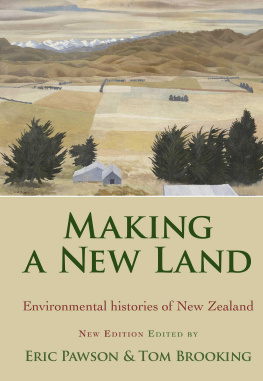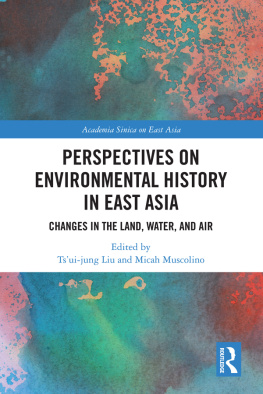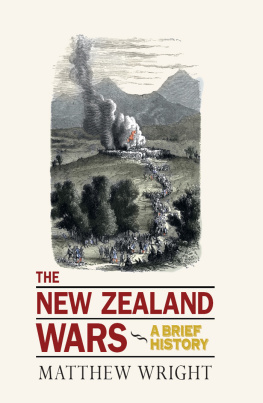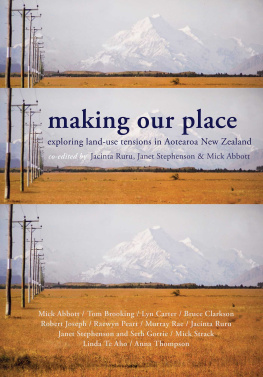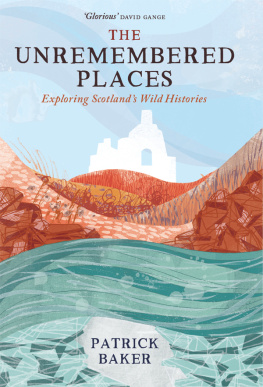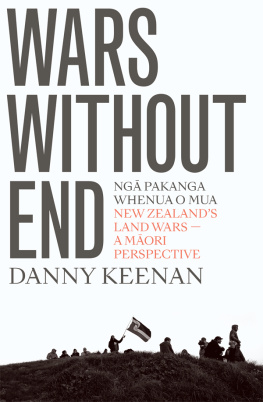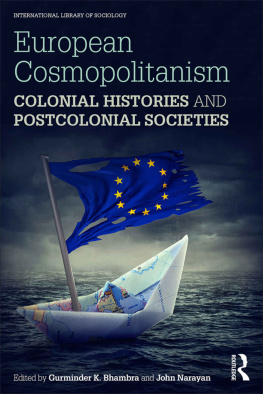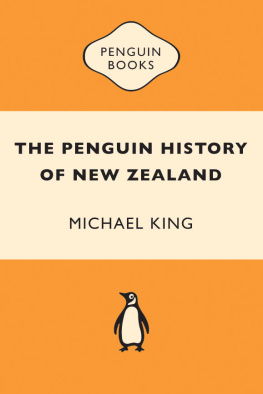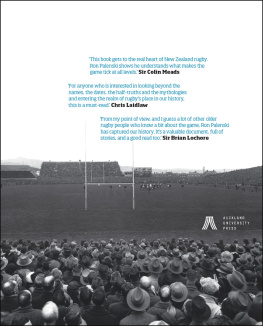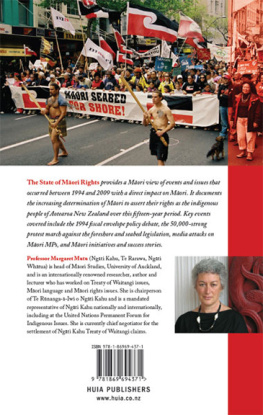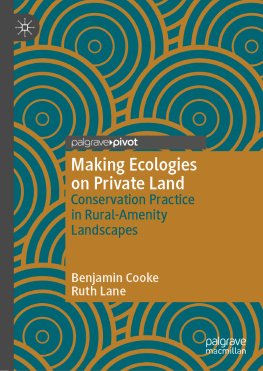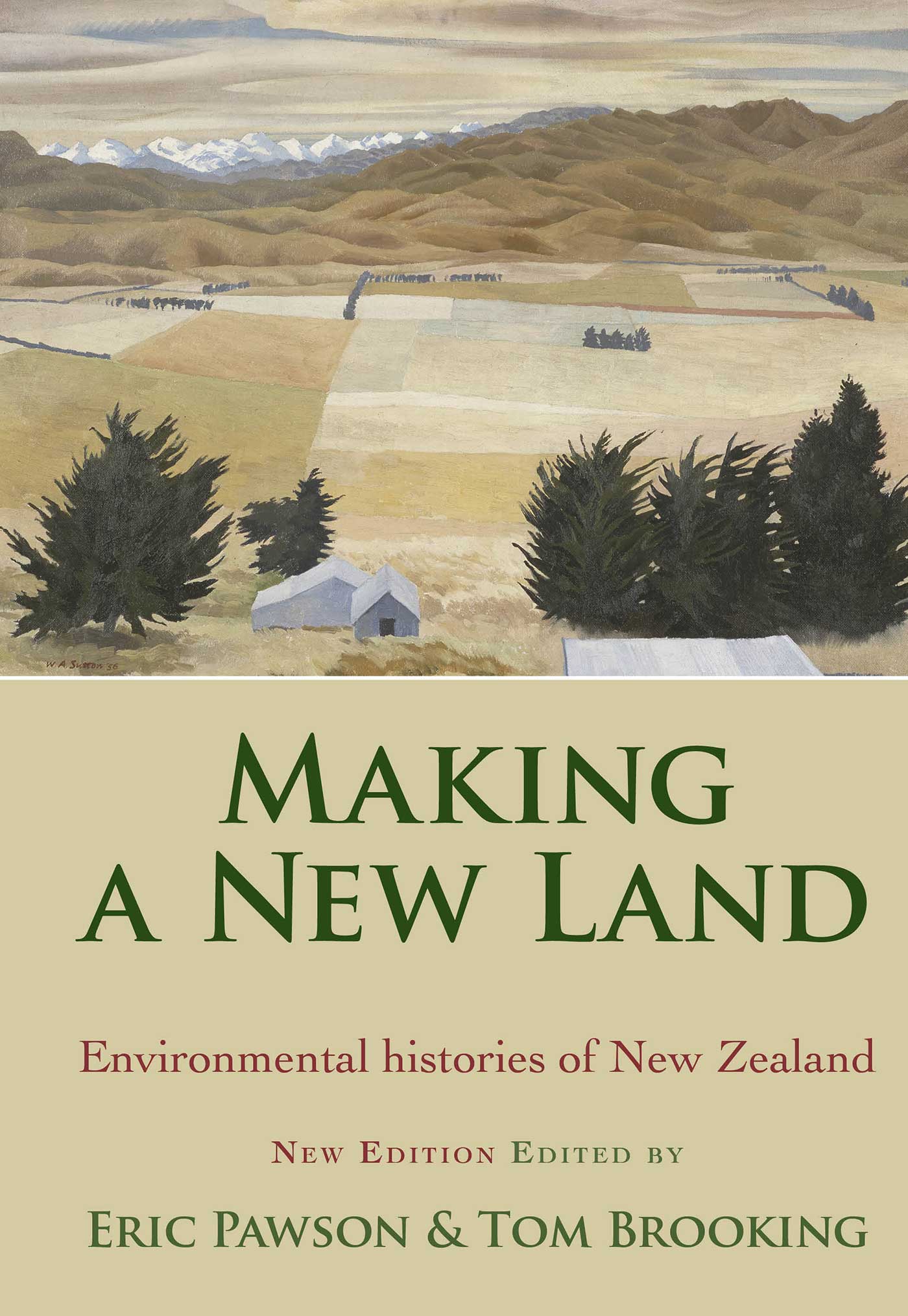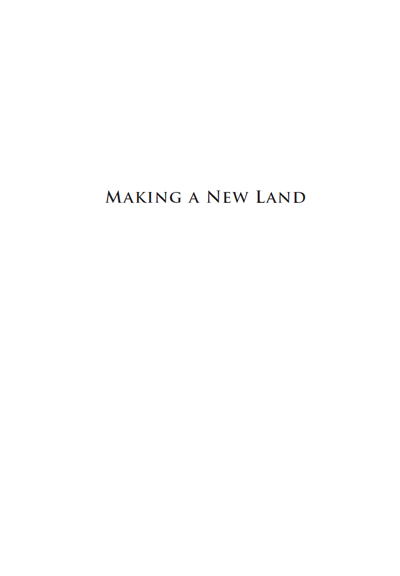Contributors
ATHOLL ANDERSON, CNZM, FAHA, FRSNZ, FSA, is Emeritus Professor at the Australian National University, where he was previously Professor of Prehistory and Director of the Centre for Archaeological Research. He has worked on the prehistory of humanenvironment relationships for 40 years in New Zealand and throughout the Pacific and Indian Ocean islands, especially on human colonisation, the exploitation of maritime resources and avifaunal extinctions. He is the author of Prodigious Birds: Moas and Moahunting in Prehistoric New Zealand (1989) and The Welcome of Strangers: An Ethnohistory of Southern Maori, AD 16501850 (1998).
JAMES BEATTIE is Senior Lecturer in History at the University of Waikato. He has published widely on world, British imperial, garden and environmental histories. His monograph Empire and Environmental Anxiety, 18001920: Health, Science, Art and Conservation in South Asia and Australasia (2011) presented new perspectives on British imperialism. Forthcoming co-edited and co-written books include Lan Yuan: A Garden of Distant Longing (2013); Networks of Nature in the British Empire (2014); and Climate, Science and History in Australasia (2014). His next major projects examine ChineseNew Zealand environmental connections, and Chinese art collecting.
TOM BROOKING is Professor of History at the University of Otago where he has supervised six PhDs in environmental history to completion. He also works in New Zealand agricultural and rural history as well as political history, the history of ideas, and the ScottishNew Zealand connection. His book with Eric Pawson, Seeds of Empire: The Transformation of the New Zealand Environment (2011), was based on research carried out under a Marsden grant. Currently he has a co-authored book on Scottish migration to New Zealand (also funded by Marsden) in press; and his biography of New Zealands longest-serving Prime Minister, Richard John Seddon, will appear shortly.
ANDREAS AAGAARD CHRISTENSEN has an MSc in Geography and Cultural Studies and a BA in Psychology from Roskilde University. He is a PhD Fellow at the Department of Geosciences and Natural Resource Management, Copenhagen University, Denmark. His research project is the study of land use culture among farmers in European and colonial agrarian landscapes and the effect of such subjectivities on the ecology of rural landscapes. His research interests include landscape ecology, cartography, GIScience, environmental history, environmental anthropology and rural planning.
TERRY HEARN received a PhD from the University of Otago for his thesis on resource policy and resource-use conflict in nineteenth and early twentieth-century New Zealand. He was a contributor to the New Zealand Historical Atlas (1997), and spent six years as the Historian of British Immigration in the Ministry for Culture and Heritage, where he co-authored Settlers: New Zealand Immigrants from England, Scotland, and Ireland 1840 to 1945 (2008, with Jock Phillips). Since 2001 he has worked as a consultant on claims lodged by Mori under the Treaty of Waitangi: he has contributed to nine major regional inquiries with a particular focus on land issues and the social and economic experience of Mori.
PETER HOLLAND was educated at the University of Canterbury and the Australian National University, and has worked in Canada, Kenya, New Zealand and South Africa. He was appointed Professor of Geography at the University of Otago in 1982, and has been Emeritus Professor since 2006. Trained as a biogeographer, his current research interests include environmental change during the early colonial period. His book Home in the Howling Wilderness: Settlers and Environment in Southern New Zealand was published in 2013. He is a past President of the New Zealand Geographical Society and was awarded the Societys Distinguished New Zealand Geographer medal in 2008.
LYNNE LOCHHEAD received a PhD from Lincoln University in 1994 for her thesis, Preserving the Brownies Portion: A History of Voluntary Nature Conservation Organisations in New Zealand, 18881935. She lives in Christchurch and is currently involved in a long-term project to revegetate a section of Harts Creek and Birdlings Brook, in the Lake Ellesmere/Te Waihora catchment. She also works to conserve the heritage of built landscapes, something that has become all the more urgent in the aftermath of the Canterbury earthquakes.
JIM McALOON taught history for many years at Lincoln University and since 2009 has been Associate Professor in History at Victoria University of Wellington. He has research interests on the borders of environmental and economic history and has published widely in the history of nineteenth-century New Zealand, including a regional history of Nelson (1997) and No Idle Rich (2002), a study of wealthy settlers in Canterbury and Otago. More recently he contributed a chapter on the relationship between British markets and New Zealand grasslands to Brooking and Pawson, Seeds of Empire (2011).
TIM NOLAN is the director of Blackant Mapping Solutions, a cartography and geographics company based in Christchurch. With a BSc and MSc in Geography from the University of Canterbury, he has a wide range of interests in geography and mapping, particularly in visualising historical landscapes. His maps have appeared in numerous publications, including the Historical Atlas of New Zealand (1997) and the Macmillan (NZ) World Atlas (2008). He is currently a member of the Committee of the New Zealand Cartographic Society.
GEOFF PARK was a Wellington-based ecologist with a tendency to history, in particular the effects of colonisation on the indigenous Pacific. He was the author of Ng Uruora: The Groves of Life: Ecology and History in a New Zealand Landscape (1995). He was a Concept Leader at the Museum of New Zealand Te Papa Tongarewa, and worked as a researcher for the Waitangi Tribunal on the flora and fauna claim (Wai 262). A collection of his work was published as

